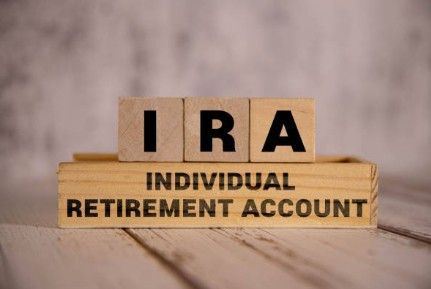Is Your IRA Collecting Dust?
Get more OUT OF YOUR IRA through consolidation

Simplify Your Savings: A Guide to Consolidating Multiple IRAs
As you navigate your financial life, it's common to accumulate multiple Individual Retirement Accounts (IRAs) from rollovers, changing custodians, or years of separate contributions. While each account holds valuable retirement savings, managing a collection of IRAs can lead to unnecessary complexity and potential financial inefficiency.
Consolidating your IRAs into a single account can be a strategic move to simplify your financial life, gain a clearer picture of your retirement strategy, and potentially save you time and money.
The Benefits of Consolidating Your IRAs
Merging multiple IRAs into a single account offers several compelling advantages:
- Easier Management and Monitoring: The most immediate benefit is simplicity. Instead of tracking multiple statements, passwords, and investment allocations across different institutions, you have one login and one consolidated statement. This makes it easier to monitor your overall balance, performance, and asset mix.
- Reduced Fees and Costs: Many IRAs charge annual maintenance, administrative, or account fees. By combining smaller accounts into one larger one, you may be able to eliminate duplicate fees or qualify for a higher service or benefit tier at a single institution, which can reduce your overall costs.
- Comprehensive Portfolio Management: With a single, consolidated account, you gain a clearer, comprehensive view of your total investment portfolio. This visibility allows for more intentional asset allocation, helping you avoid unintentional duplication of investments and ensuring your holdings are properly diversified and aligned with your risk tolerance and retirement goals.
- Simplified Required Minimum Distributions (RMDs): Once you reach age 73 (or the age applicable to you under current law), you must begin taking RMDs from traditional IRAs. Although you can generally aggregate your RMDs and take the total amount from any of your traditional IRA accounts, having fewer accounts simplifies the tracking and calculation process, reducing the risk of a costly mistake.
- Streamlined Estate Planning: Consolidating your accounts simplifies the task for your beneficiaries. Fewer accounts mean less paperwork for your heirs to locate and manage, making the process of settling your estate smoother and ensuring your assets are distributed according to your wishes.
Potential Drawbacks and Considerations
While the benefits are significant, consolidation is not a one-size-fits-all solution. Before making a move, consider these potential drawbacks:
- Transfer or Closing Fees: Some financial institutions may charge fees for closing an account or transferring assets out. Always check with your current provider to understand any costs before initiating the transfer.
- Loss of Unique Investment Options: If one of your current IRA accounts offers access to exclusive funds, institutional pricing, or unique investment opportunities not available at the consolidating institution, you would lose access to those options.
- The "One Rollover Per Year" Rule: The IRS restricts you to only one IRA-to-IRA indirect rollover (where the money is paid to you and you deposit it within 60 days) in any 12-month period, regardless of how many IRAs you own. However, direct transfers (where the money moves directly from one custodian to another without passing through you) are unlimited and the preferred, safer method for consolidating IRAs.
- Tax Considerations: It is crucial to maintain the correct tax-advantaged status. For example, you should only transfer a Traditional IRA to another Traditional IRA and a Roth IRA to another Roth IRA to avoid any taxable events. You generally cannot combine Traditional and Roth IRAs.
How to Consolidate Your IRAs: The Direct Transfer Method
The simplest and safest method for consolidating IRAs is a direct transfer (also known as a trustee-to-trustee transfer). This process is non-taxable and avoids the risk of penalties.
Here is a step-by-step guide:
1. Select Your Destination Account (The "Receiving" IRA): Choose the financial institution and account you want to use for your consolidated savings. If you don't already have one, you will need to open a new IRA (Traditional or Roth, as appropriate).
2. Gather Your Account Information: Collect your most recent statements for the IRAs you plan to move (the "giving" accounts). You will need account numbers, current balances, and the contact information for the current custodians.
3. Initiate the Transfer with the New Custodian: Contact the financial institution that holds your new consolidated account. They will have a specific transfer or rollover form you need to complete. This institution will often handle the majority of the transfer process, including contacting your old custodians.
4. Complete the Paperwork: The transfer form will instruct the old custodian to move your assets to the new one. Specify a direct transfer to ensure the funds never pass through your hands, which minimizes the risk of tax penalties.
5. Review and Reinvest: Once the transfer is complete, confirm the full amount has been received. Since the assets may have been sold into a money market fund to facilitate the move, you will need to reassess your investments to ensure your new, consolidated portfolio is properly allocated to match your long-term goals.
The Bottom Line
Consolidating your multiple IRAs can be a powerful tool to simplify your financial life, reduce administrative clutter, and give you a more effective handle on your retirement strategy. However, due to the complexity of retirement account rules, it is highly recommended to consult with a qualified financial advisor or tax professional before starting the process to ensure all transfers are executed correctly and you do not incur unexpected taxes or penalties.
Who Are Some Options to Consolidate Your Accounts?
For investors seeking exclusive investment opportunities focused on income, income growth, capital appreciation, and safety, Nerat Capital works with specialized custodians like Alto IRA and GoldStar Trust.
For more general retirement options Charles Schwab and Fidelity remain excellent choices.






